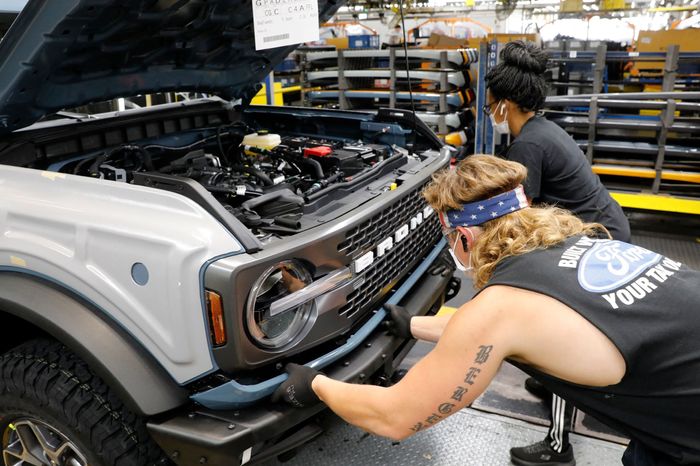At least 6.5 million people were cut off from federal unemployment benefits in September, but don’t expect most of them to rush back into the U.S. labor force looking for work.
The U.S. probably saw somewhat faster hiring in September after a dismal 235,000 increase in new jobs in August, according to a survey of economists. Wall Street DJIA, -0.86% is expecting an increase of about 500,000 new jobs.
Yet most companies say it’s not easy to find people to hire, even when they offer higher pay. The U.S. has a record number of job openings and they are not being filled very quickly.
The employment report comes out next Friday and highlights a busy U.S. economic calendar.
A surprising labor shortage of sorts has become one of the biggest constraints on the economic recovery. The number of people working is still is 5 million below pre-crisis levels — and that doesn’t count another several million jobs that likely would have been created had there been no pandemic at all.
What will help in September, economists say, is the reopening of most schools to in-class learning. That allowed more parents to return to work.
But why aren’t more people returning to work?
It’s estimated that several million people retired early, for one thing, a decision made easier by a booming stock market. It’s unclear how many will return once the pandemic fades away.
Others say they either have enough money to get by for a while or have a spouse on whose income they can rely, surveys show. More generous government benefits have also made it easier for some people to stay at home.
Most of these people will likely return to the labor force eventually, most economists contend. But some are starting to wonder if there’s been a permanent change in the labor force in which fewer people end up working.
“A lot of people are thinking about these issues,” Atlanta Federal Reserve President Rahael Bostic said in response to a question from MarketWatch. He said the labor market is in a state of “turbulence” right now.
Many companies have raised wages or increased benefits to try to lure workers, but that might not be enough to entice them back to work. Some are still fearful of the coronavirus and may seek other lines of work.
Take former employees of restaurants, hotels or other businesses that deal directly with customers. Some don’t want to be as exposed to people so as to limit their chances of catching the virus.
Hiring in leisure and hospitality, not surprisingly, fell to zero in August amid a big outbreak of the delta strain of coronavirus.
Even businesses with little or no contact with customers, however, are having a hard time finding qualified workers. A new survey of manufacturing executives, for example, showed employment contracting in September.
“Business levels continue to be very strong, but we also continue to struggle finding employees,” said one senior executive of a company that produces primary metals used in array of manufactured goods.
Until more people enter the labor force, economists say, the upper speed limit for U.S. growth will face tighter limits and drag out the recovery.
Article Source: Marketwatch
Written by: Jeffry Bartash

